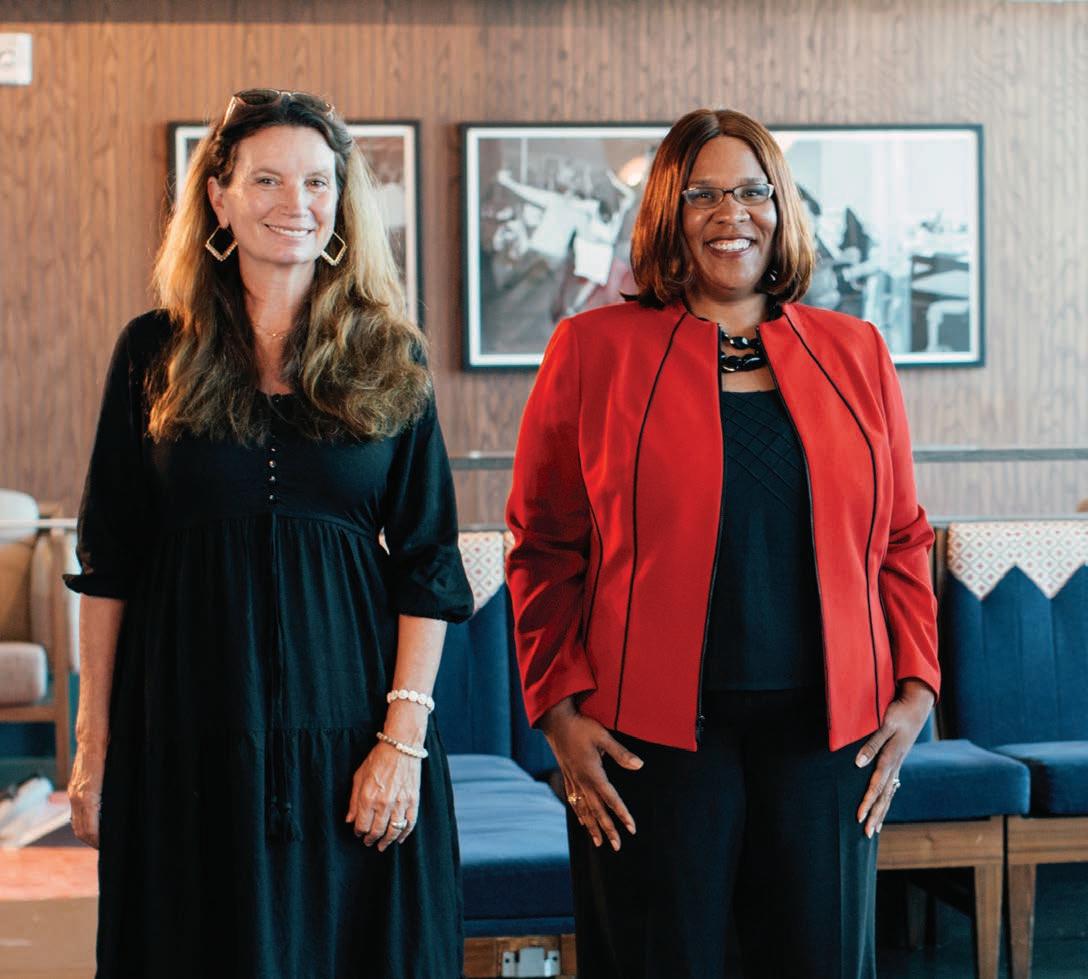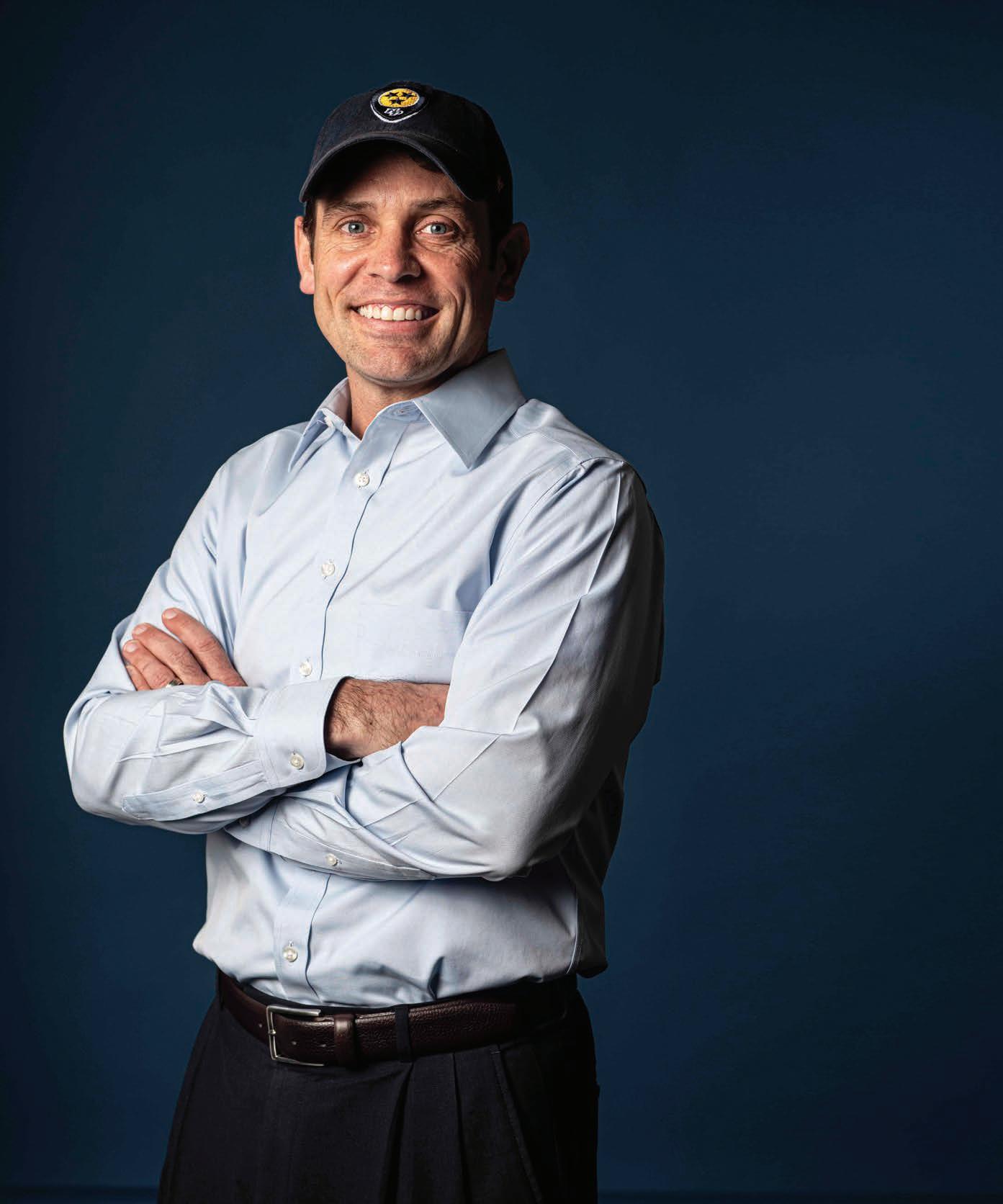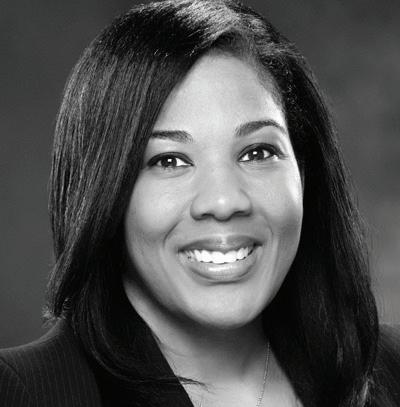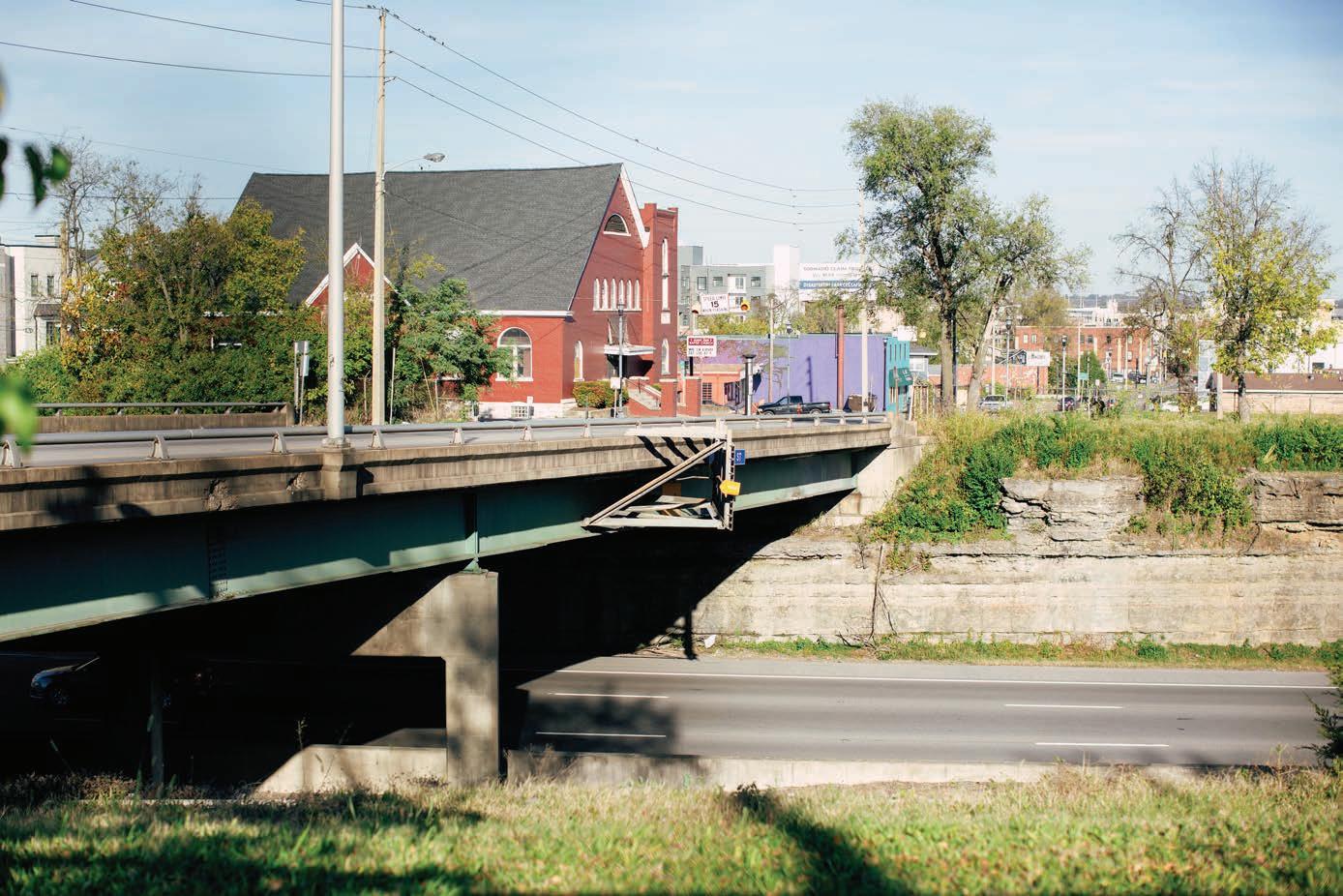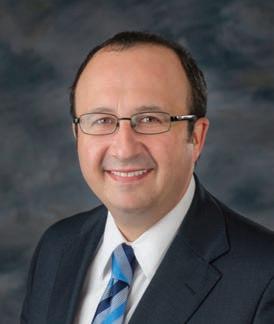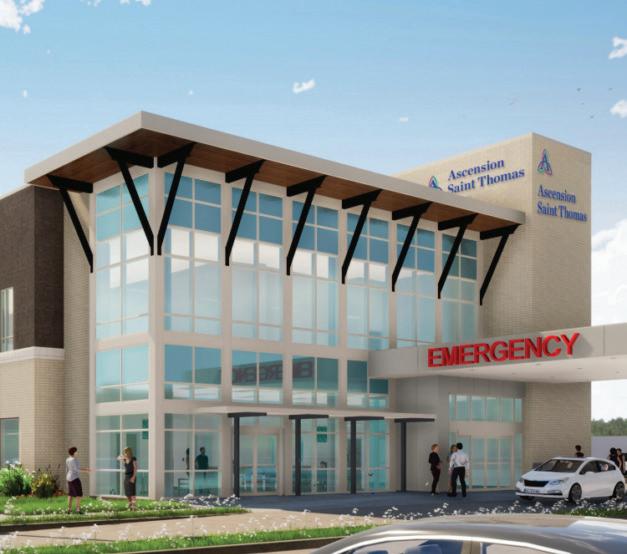
12 minute read
MEHARRY’S MAIN MAN
James Hildreth is leading the med school through the pandemic without taking his eye o ambitious longer-team goals
BY KARA HARTNETT
Advertisement
n Camden, Arkansas, in 1968, where
I a railroad track separated the Black neighborhood from the rest of town, James Hildreth watched his father die from renal cancer without being admitted to a hospital for proper medical care.
“ e bottom line is that we were Black and poor, so my dad didn’t get a lot of medical attention, and that made me really angry,” says Hildreth, now a world-renowned infectious disease expert, president of Meharry Medical College and a crusader for a health care industry that more equitably serves the needs of minority communities. “For a long time, I didn’t talk to another human being. I mean, literally, I couldn’t. But my mother, God bless her, she talked me out of that and into doing something about it. So I decided to become a doctor.”
Seven years later, Hildreth graduated top of his class at Camden High School, which had desegregated when he was in the ninth grade, and was accepted to Harvard University with multiple scholarships. ere, he used the carpentry skills he learned from his father and uncles to earn the remainder of his tuition by building walls in classmates’ dorm rooms.
“One lasted for at least 20 years,” says Hildreth, who has a knack for woodwork to this day. ree years in, he decided to apply to become a Rhodes Scholar at Oxford University — one day before the application was due. But with the help of a roommate who worked at the Post O ce, Hildreth secured an envelope stamped with the due date and submitted his paperwork a week later. rough what he calls divine providence, Hildreth became the rst African-American man from Arkansas to receive the prestigious scholarship. He was o to England.
He received his doctorate in immunology in 1982, then attended John Hopkins School of Medicine, where he began to study how viruses usurp the human immune system. Upon graduation, he began teaching at Johns Hopkins full-time; he was the rst African American in its 125-year history to become a tenured professor of sciences.
Peers hailed Hildreth as a “scienti c hero” for the research he conducted on HIV. He and his team were the rst to discover the link between cholesterol and HIV’s entrance into cells, paving the way for prevention mechanisms and therapeutics that would help contain the epidemic and transform AIDS into a manageable chronic illness. In that pursuit, Hildreth obtained more than 15 patents and wrote scores of articles for academic journals.
In 2004, Meharry leaders tried to recruit Hildreth to open an HIV research center on their Nashville campus. He declined the o er but then Meharry did something “kinda spooky,” Hildreth says: “ ey called my wife, Phyllis.”
Phyllis Hildreth — a prominent community member herself, now vice president for instructional advancement and strategic partnerships at American Baptist College and a member of Nashville’s Community Oversight Board — encouraged him, along with his mentor, to reconsider and at least visit Nashville.
“I had never expected it to be quite like it was. From the students, the faculty and the sta just buying into the mission of the place and its commitment to serving the underserved and giving opportunities to people,” Hildreth says. “I had been at some of the best institutions in the world — Harvard, John Hopkins, Oxford — but I had never experienced anything quite like that.”
After returning from his visit, Hildreth says he decided to move to Nashville and accept the position on the anniversary of Martin Luther King Jr.’s birthday while singing in the choir at his church.
“My seat was right next to the pulpit, and the reverend got up and read the scripture where Christ was out walking on water. He read that scripture and looked at me — and I had not talked to the man about the decision I was trying to make — and said ‘ e title of my talk today is It’s Time to Get Out of e Boat.’”
“ is feeling came over me that God had sent a message through him that it was time for me to leave Hopkins and go to the place where my work would be more impactful,” Hildreth says.
Within months, he was leading the Center for AIDS Health Disparities Research, an initiative launched by Meharry and funded by the National Institutes of Health that sought to understand and eliminate the factors responsible for the disproportionate burden of AIDS minority populations face in the United States. He has been president and CEO of 144-year old Meharry since 2016, when he unveiled a 10-year vision for the institution that aims to dramatically grow the school’s enrollment and bring in resources to level the playing eld for students at the historically underfunded Black medical college while pushing forward its mission: eliminating health disparities and providing care and opportunities to minority communities.
Hildreth and his team have worked to reimagine how they educate young doctors, set up a data science institute that has a research deal with the United States military, launched a program for physician assistants and begun to expand Meharry’s technology infrastructure to support independent clinical learning options for students.
Hildreth’s primary educational goal with Meharry 2026 is to step away from what he calls the “sage on a stage” teaching model and use emerging software to build a more handson experience.
“Walk into any lecture hall in the country, close your eyes and imagine that the lecturer was speaking Greek or Latin. at’s what teaching was like 1,000 years ago,” he chuckles. “It’s a great way to teach but a terrible way to learn. So we have to change that. And that means technology and getting the campus ready to do things in a new way.”
Hildreth wants to double enrollment for the medical and dental schools to 125 and 210 students, respectively. at process will begin in earnest after Meharry’s reaccreditation in 2022, but the school has already launched strategies that will recruit a greater number of diverse candidates. One recruits a class of about 10 from several nations in Africa to train to become dentists in their home countries. And a edgling partnership with Middle Tennessee State University, called ree-for- ree, puts eligible students on track to nish both their undergraduate studies and medical school in just six years. Tuition is paid for by the state. In exchange, residents commit to practicing in Tennessee for at least two years after training, with priority given to rural areas where hospitals are struggling to remain open and health care services are dwindling.
Tackling a pandemic On March 6 of last year, Hildreth stood alongside Meharry colleagues and unveiled a proposal to launch a safety-net health system that would expand across Nashville’s largest health organizations — Vanderbilt University Medical Center, Ascension Saint omas, TriStar Health and Nashville General Hospital — for the city’s underinsured residents. Called BetterHealth Nashville, the initiative would establish for indigent patients a care management program that centralizes their medical history and makes it easier for physicians to manage chronic conditions and provide appropriate treatments. e clinical records would create the largest repository of data on underserved communities in the nation and, managed by Meharry’s data scientists, spur research into health disparities.
Hildreth called it “a model for the nation” but, by the end of 2019, public momentum to invest in the proposal had zzled out.
Exactly a year after the program was announced, the rst case of COVID-19 was recorded in Tennessee. It took only weeks for the novel coronavirus to wreak havoc throughout the country and make it clear that the underserved communities BetterHealth Nashville had looked to lift up face a heavier burden of sickness and death. at imparity continues today: Black people account for 24 percent of the state’s overall death toll despite making up 17 percent of the population.
“If we had a system in place like the one that we proposed, we probably could have helped those communities heavily burdened by COVID-19,” Hildreth says. “ e pandemic just threw back the cover on a problem that has existed for a long time.”
As the virus has gone global, so has Hildreth: • He regularly reminds local, state and national governments of the importance of protecting vulnerable populations — those with chronic health conditions, who live in congregate care settings, are older or live in rural areas — and advocates for enhanced testing and contact tracing. • He has tapped into lessons retained from his research on AIDS to help lead the Middle Tennessee COVID response and lobby Congress to invest in new infrastructure that would help identify the full extent of health disparities. • He has helped write legislation that commits the U.S. Department of Health and Human Services to collect and publish racial and ethnic data — like the comparative death rates — alongside health outcomes. • He was named this fall to a 20-person U.S. Food and Drug Administration committee that will evaluate the e cacy of COVID vaccine candidates. • In addition to his work with the FDA, Hildreth testi ed before Congress on behalf of the need for $5 billion in funding to establish the Consortium of Black Medical Schools to provide a network of testing and contact tracing among the nation’s historically black colleges and universities. ose organizations would serve as testing hubs in communities hard hit by the virus and provide surveillance and resources within local outbreaks. e initiative would transcend testing and tackle vaccine outreach and administration and seek to improve social determinants of health while establishing trust among populations long underserved by the medical industry.
“I just felt like the four black medical schools, having engendered a reasonable amount of trust in communities of color, that we would be best suited to establish a national network of testing and contact tracing that might be much more e ective than any other organization that could do it,” he says.
Hildreth, his faculty and Meharry students went to work on the project at home. In February, Meharry began to set up a drive-thru site to ensure testing was available for everyone in the community, regardless of their abil-
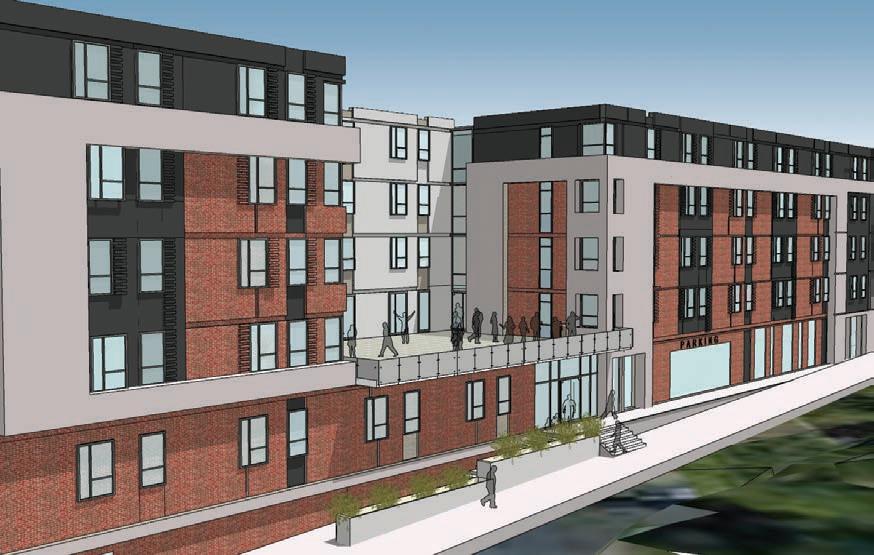
NELSON ADAMS
ity to pay. Launched with limited resources and on an entirely voluntary basis, this small institution’s work quickly evolved into a citywide e ort, running three drive-thru assessment centers for Metro, coordinating testing at neighborhood churches and employing pop-up COVID assessments in high-risk immigrant communities.
In May, reports that state and Metro o cials were sharing patient information of individuals who tested positive for COVID to the police department and rst responders threw a wrench in testing in minority neighborhoods, where outbreaks were persisting. Metro Coronavirus Task Force Lead and Chairman of the Board of Health Alex Jahangir, a trauma surgeon at Vanderbilt, says Meharry was invaluable in regaining that trust to restart virus surveillance in those areas.
“ e fact that Meharry was willing to serve as the vendor to run assessment sites when we decided to bring this on … I mean, how great is that. Meharry has done it well,” Jahangir says. “ ere were legitimate concerns and trust issues in the community that I think Meharry’s knowledge, experience and community trust helped us overcome.”
Meharrians’ mission didn’t stop there. Researchers started creating breastfeeding guidelines for Black mothers who have been infected with COVID to pass on natural immunity through their breast milk until babies can receive a vaccination. Clinics run by Meharry received $719,000 from the U.S. Department of Health and Human and Services to establish a telehealth infrastructure that monitors patients with chronic illnesses from their homes. And labs paused international research into antivirals and treatments for Ebola, HIV and the Zika virus to pivot to COVID work. e Meharry team’s next big move related to the pandemic is to recruit people of color and those with chronic health conditions into multiple vaccine trials. Hildreth says that work will help account for subtle di erences in the genes that control immune responses across di erent groups.
Meharry has tackled these issues as students and faculty members have navigated the pandemic. Like most other institutions, the medical college took a nancial hit as the virus spread across the globe. Hildreth and his team have had to re nance debt, tap into deferred maintenance funds and cut sta signi cantly to address the costs of a safe return to in-person learning.
“It was bad, and it still is,” Hildreth sighs. “But we are going to make it.” Shared plans Longer term, the pandemic has in some ways fast-forwarded many of the plans laid out in Meharry 2026 — namely the expansion of broadband and igniting new research partnerships — and given the local HBCU a higher pro le than ever before. at stature was boosted further in early September, when Bloomberg Philanthropies announced a $34 million donation to Meharry that will provide scholarships of up to $100,000 over four years for Black medical students. It was the largest gift in school history and was soon after followed by contributions from ermo Fischer and e Gates Foundation to expand the institution’s testing capacity.
As multimillion-dollar charities continue to identify Meharry as a worthwhile investment and public awareness of the school’s priorities rises, the chair of the school’s board of trustees, Nelson Adams, credits the school’s momentum to Hildreth’s COVID response plan and the team’s execution.
“Meharry has stepped up to the plate in no short order because of the pedigree of the president,” Adams says. “He is a person who is able to deal with the proverbial kings and queens as president, but he has never lost the common touch. I think it’s that last point that makes him an e ective communicator, a trusted voice. Not only in the Nashville community but beyond, on an international scale.”
A visible sign of Meharry’s local growth and the role partnerships will play in its future is the building of a mixed-use, 125-unit living-learning space (pictured on this page) planned for 21st Avenue North. e facility will be the beginning of a village campus shared by Meharry, Tennessee State University and Fisk University. Students studying similar programs will live among each other and be able to attend classes together. In addition to dorm rooms, the project will feature two classrooms, a tness center, outdoor terraces and possibly retail spaces.
Hildreth says he hopes the three HBCUs that sit close to each other along Je erson Street can over time merge their campuses and resources to provide an enhanced learning experience for students while creating a prestigious academic corridor in North Nashville.
“We have the making to create this dynamic and amazing part of town where you feel like you are in an academic village — and we would like to pursue that,” he says.

